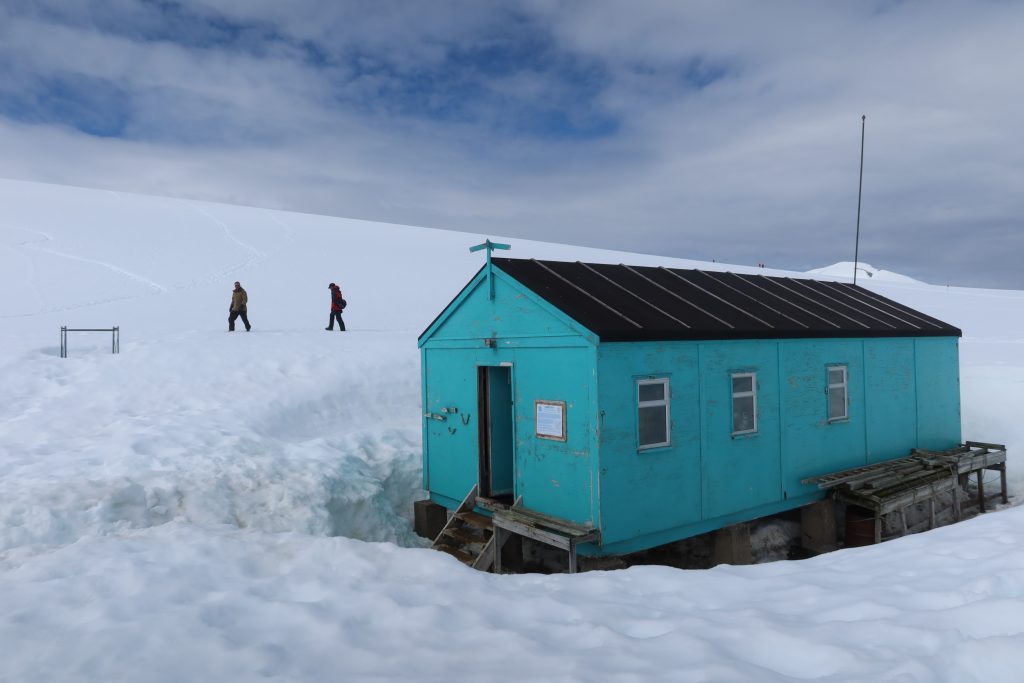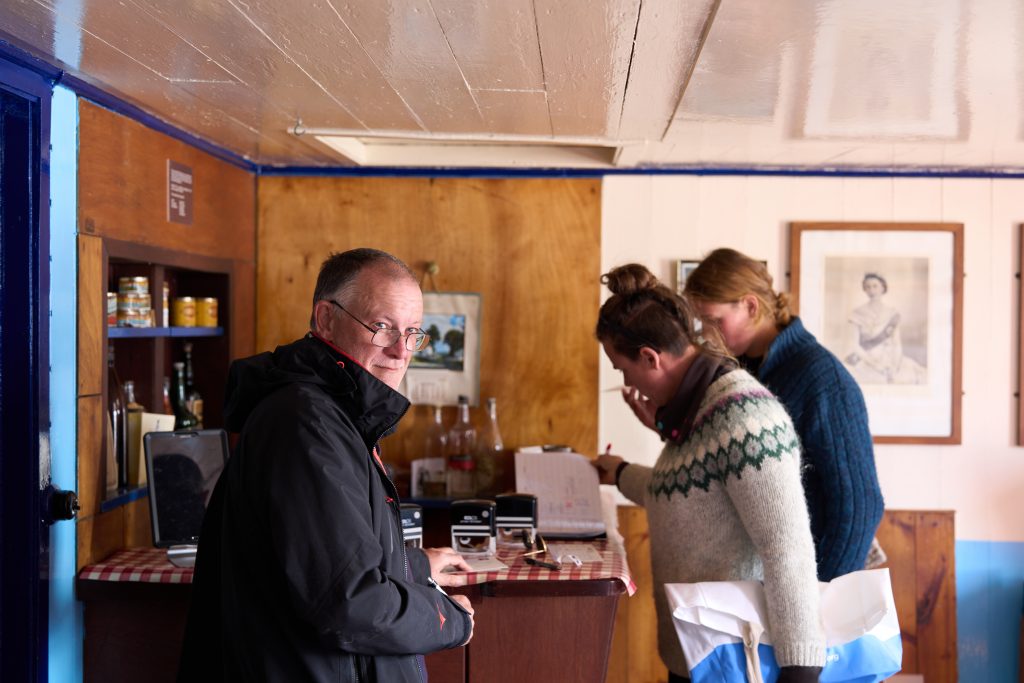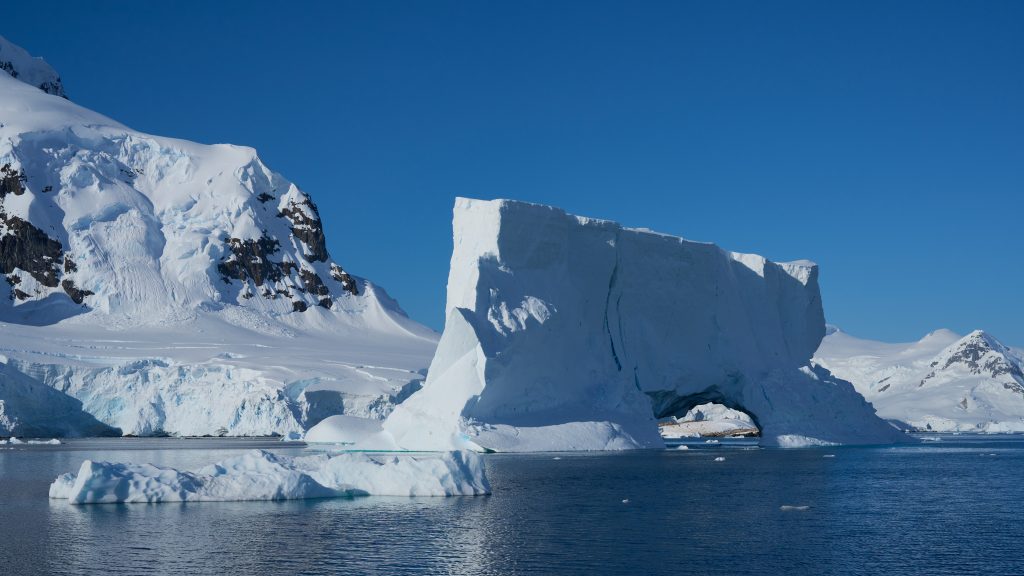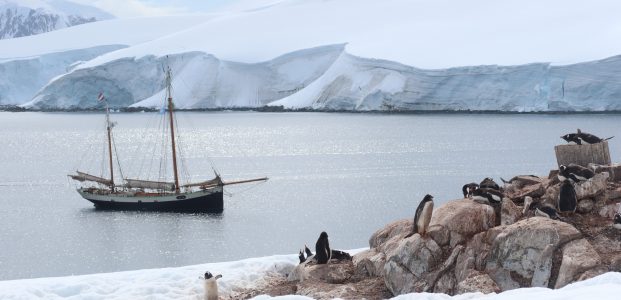Port Lockroy is one of the most visited sites on the peninsula, so early morning we radioed the base to ask whether they had a slot for us to land. They have a limit of 350 people per day and we were told that we could have a quick slot at 12.30 in between two cruise ships. To pass the time we headed to Damoy Point to see one of the historic huts – Damoy Hut. This was established by the British Antarctic Survey in 1975 and its purpose was as a transit station to support the airstrip on Damoy Point. This had been used since 1973 and allowed BAS to drop supplies by ship and then fly them on to their Rothera base. This is much further south and so clears of ice much later in the season. By ferrying supplies from Damoy Point to Rothera by plane, they could have a much longer season there. The hut was last used in 1993 as the next year BAS started operating direct flights to Rothera and so no longer required the transit station. The hut is now maintained by the UK Antarctic Heritage Trust and is kitted out with various artefacts from the era when it was operating. Interestingly, the branding on the Marmite, Bovril and Birds Custard Powder could scarcely be differentiated from more modern versions!

We also walked round the various gentoo colonies on the point and then got back to the boat for around 11am to head back to Port Lockroy. The morning cruise ship seemed to take their time clearing the area, so we were finally allowed ashore at about 1.15pm and given a rather miserly half hour slot. However, it was enough to send some postcards, though buying these by contactless card seemed rather surreal given the location.

After this we headed off round the south of Wiencke Island and then up to the north through Ferguson Channel and into Paradise Harbour. The route took us past an incredible variety of icebergs and we spent some of the time anthropomorphising the various shapes of the icebergs. We had rabbits, poodles and even swans and ducks. Yes, we may have had over-active imaginations at times, but the variety of shapes was almost too much to take in. A huge iceberg with an arch was perhaps the piece de resistance, though picking out any one iceberg was perhaps unfair to all the others!

We finally anchored at a site called Waterboat Point at the northern end of Paradise Harbour. It is so named after researchers who lived here in 1921 under an upturned waterboat while doing their research. It is now the site of a Chilean research base and we have tucked ourselves in through the ice to try and stay sheltered from a forecast intense depression coming through.


